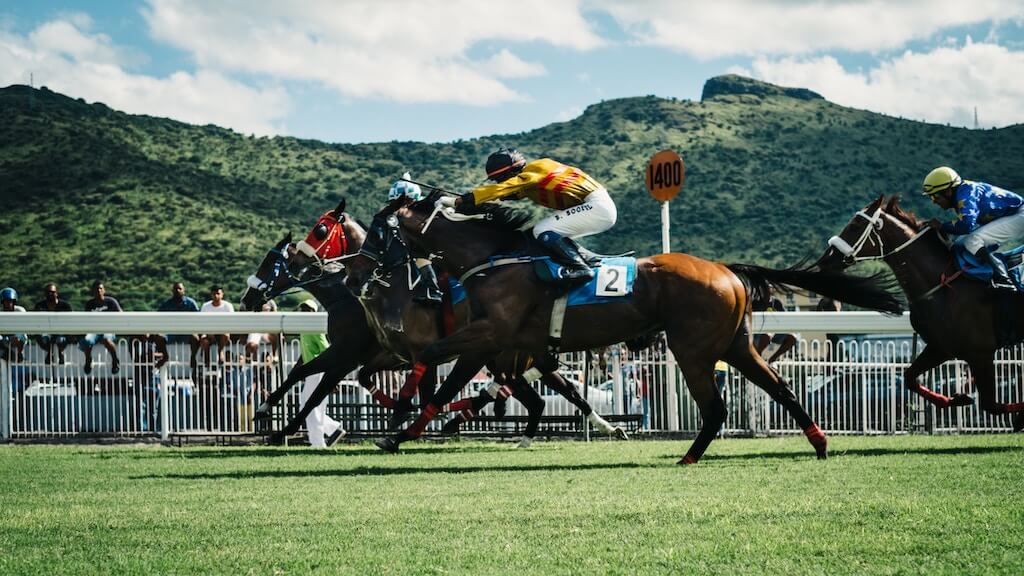Update, 20 October 2023: I no longer stand by the ideas in this post. The fundamental problem with time allocation is that capital is higher leverage than time, and so investing ideas often don’t map to career decision making.
One of the more interesting ideas that I touched upon in my last blog post was this idea of treating time management as a capital allocation problem.
I think much has been written about the ‘how’ aspect of time management: how do you capture everything you're responsible for, and how do you demolish the things on your todo list?
Less has been written about the flip side of time management: what do you work on in the first place?
Or, to phrase this differently: given a finite amount of time, how do you allocate that time in bets that would best benefit your life?
Finance is obsessed with a similar problem: given a pool of capital, how do you allocate that capital in a way that is likely to give you the best return? Each investment may be seen as a bet: that is, what are the odds of success, and what are the returns if you do succeed? And from the reverse angle: what are the odds of failure, and would you be destroyed if you lose?
The analogy isn’t perfect, of course. While some people might be richer than others, everyone has exactly the same amount of time. If we’re talking about our careers, then the amount of time you can allocate on career-supporting activities is constrained by your priorities with regard to family, health, and leisure. This is a lot more baggage to deal with as compared to questions of capital allocation — you don't have to reserve a portion of your money the way you have to with your time for sleep, for instance.
But there are similarities. Each activity that you choose to do may be considered a bet. If you chose to learn data science in your spare time, you are giving up all the alternate futures in which you chose to learn something else.
(In fact, even the manner in which you chose to study data science is bet allocation: if you enrol in a course, you are sacrificing time and money for a higher probability of success; if you decide to self-learn, you are trading time flexibility for a lower probability that you'll stick to it till the end).
The truth is that we make such decisions all the time. And I think — as with many such things — our ad-hoc time-allocation decisions are pretty terrible. We look back at our decisions and go “well, it turned out pretty well, didn’t it?” but we can’t really look at the alternate futures that would've happened had we made different decisions, so we can’t really say if our decisions were the most optimal ones.
The question now becomes: is it possible to adapt some of the techniques from finance to personal time management? I suspect it might be possible, but I'm not entirely sure. The good news is that my reading over the past few weeks tells me that I'm not the first person to ask these questions, which in turn means I can benefit from other people's ideas.
The Kelly Criterion
The Kelly criterion is a formula that tells you the optimal amount to place on a given bet. Let’s say that your initial capital is $100 dollars. How much of this starting capital should you bet on a particular horse in a race track? Or a particular hand in a game of blackjack?

One naive answer is to say: “I’ll just go all in!” But this is a stupid idea — if you win, you win big. But if you lose even once, you’ve wiped out your entire bankroll and can’t play any longer.
The Kelly criterion says that the optimal amount to bet may be calculated through the following formula:
$$f^{*} = \frac{bp - q}{b}$$where \(f^{*}\) is the percentage of your capital you should bet, \(b\) is net odds on your wager (e.g. if you bet \$1, how much would you get back on top of your \$1 if you win), \(p\) is the probability of winning, and \(q\) is the probability of losing (that is, \(q = 1 - p\)).
In simple terms, the Kelly criterion is saying that the fraction of your bankroll that you should bet is \(\frac{edge}{odds}\).
The edge, \(bp - q\), is how much you expect to win, on average, assuming you could repeat this bet again and again with the same probabilities.
The odds, \(b\), are the public odds. For instance, in a horse race, the horse Juniper might have the tote-board odds of ‘8 to 1’, which means that if you win, you will receive 8 times the amount of money you wagered, plus the wager itself. These odds are determined by what everyone else bets on Juniper. They don't necessarily have to be accurate, and in fact the Kelly formula assumes that you can only win when the crowd misjudges a particular bet.
The Kelly criterion argues that if you have an edge — that is, you know something that isn't priced into the public odds — you have a chance of winning. Exactly how much you should bet is calculated by Kelly's formula.
There are a couple of other aspects to the Kelly model. You might notice that if you do not have an edge over the public odds, then the Kelly criterion tells you to bet \$0 — that is, not play at all. And in situations where you have even-money odds — e.g. if you bet \$1 you win \$2, or \(b=1\), Kelly’s formula can be simplified to: \(f^{*} = 2p - 1\).
Let's do a concrete example. Let's say that you have \$100 dollars. You're betting on a coin toss where there is a 55% chance that it will land heads up. In such a situation you'd always want to bet heads, because heads is more likely to turn up. If you win, the odds are 1-to-1. This means that if you bet \$1, you get \$2 in return. But how much of your bankroll should you bet the first time?
You could bet your entire bankroll on a single coin toss. But doing so will mean that you are wiped out the instant you get a single tails.
You could also start out with a small amount like $1, and then double your bet every time you lose. This strategy is called martingale, and it was popular amongst gamblers in the 18th century. The problem with martingale is that eventually you'll encounter a series of losing bets, and this system escalates your losses until it wipes you out.
This scenario we are examining gets at the heart of the betting problem. It's not enough to know the probability of success. Even if you know that a coin is likely to turn up heads over the long run, you are still at risk of running out of money over the period of your game. If you bet too much, you risk blowing up. If you bet too little, you aren't maximising the returns you might receive over that period. What you want to do is to find a sweet spot where you can remove the risk of blowing up, as well as maximise the returns from your wins when they do happen.
If we used Kelly's formula with our given problem, we would calculate it like so:
$$f^{*} = 2p - 1 = 2(0.55) - 1 = 0.1$$Which means we bet 10% of our starting bankroll, or \$10.
The Kelly system works because it is a proportional betting system. If you encounter a series of losses, you scale down the size of your bets, preserving your ability to keep playing. If you win and your bankroll grows bigger, you scale up your bets in order to capture more of your upside.
There are many proportional betting systems that ensure you will never be thrown out of a game. The difference between the Kelly system and all the others is that the Kelly system is optimal. That is, the returns from betting using the Kelly criterion will far outpace the returns from any other system. Wikipedia has a summary of the proof, but in a single sentence, the Kelly criterion maximises the expectation of the logarithm of wealth. This is the engine that powers the formula, and the reason it beats all other proportional bet-sizing strategies.
There's a fascinating history of the Kelly formula that is probably best captured in William Poundstone's book Fortune's Formula. The story begins with Claude Shannon and the birth of information theory, moves on to John Kelly, the mathematician who took Shannon's theory and turned it into a formula for gambling and stock market investing. The book finally follows Ed Thorp, who used Kelly's formula to create the first quantitative trading hedge fund. Formula is filled with colourful characters, including members of the mob who funded Shannon and Thorp's early gambling experiments, as well as the group of economists who came up with Modern Portfolio Theory — academics who remain strident opponents of the Kelly criterion to this very day.
That story is too long to retell in this blog post. I really, really recommend Poundstone's Fortune's Formula (it's all narrative, which means it makes for a relaxing read), and then if you feel up for it, I'd recommend taking a look at Kelly's original paper A New Interpretation of Information Rate, and Ed Thorp's notes on applying the Kelly formula to the stock market.
Bet Sizing in Personal Time Management
Could Kelly's formula be used in personal bet-sizing?
The honest truth is that I don't know. I suspect that there's something here, and I think I'm in good company when I say so.
One outspoken supporter of the Kelly criterion is author Nassim Nicholas Taleb. In fact I'll go so far and say that you can read everything he's ever written as an argument that the Kelly criterion can and should apply to the way you live your life. Taleb rarely mentions Kelly explicitly in his popular books, but the criterion looms large in his technical publications. Another supporter is writer and investor Robert Hagstrom, who wrote the Charlie Munger-approved 1999 book The Warren Buffett Portfolio. Hagstrom argues:
We have no evidence that Buffett uses the Kelly model when allocating Berkshire's capital. But the Kelly concept is a rational process and, to my mind, it neatly echoes Buffett's thinking. Buffett has counselled investors to wait until the best opportunities appear and then be willing to bet big.
This follows a chapter discussing Buffett's approach to making bets on companies in proportion to his subjective probability judgment of success. It's an approach that seems rather useful, especially when broadly applied to deliberate decision-making in general.
Here's why I think there's something to the Kelly criterion.
Kelly's formula works in situations where you have returns that can be redeployed over a long period of time — that is, the wins from prior bets can be ploughed into future bets. If you were in a situation where you could bet only a fixed amount, or if you were in a situation where wins don't parlay forward to future bets, then standard means-variance analysis would work better. The Kelly model only applies when today's wins can be redeployed in tomorrow's bets — that is, in situations where returns compound.
This scenario applies to the stock market ... but also to one's career capital. While each of us possesses finite amounts of time, the skills that we learn compound over the course of our lifetimes. For many of us, our future earning potential is the most important financial asset we have. The Kelly model can therefore be seen as a way to allocate hours in service of building career capital.
I'm still grappling with the practical implications of this. I don't want to bore you with the details, but there are numerous problems doing a straight-mapping from Kelly formula to personal-time management.
That said, I think it's worth it to consider the philosophy that the Kelly criterion captures, and that writers like Taleb, Buffett, Hagstrom and Poundstone continually highlight in their writings.
What are these lessons?
Take care of the downside, and let the upside take care of itself. This actual line is lifted from a Taleb book, though I'm sure the aphorism is older than Taleb himself. The Kelly criterion asks that the bettor never come close to betting the entire bankroll. Imagine that you're betting on a simultaneous toss of coins, all of which are weighted to have heads come up 55% of the time. The probability of everything turning up tails is infinitesimally small. But the Kelly bettor still doesn't stake her entire bankroll on such a bet. She reserves a small amount, and is prepared to survive the worse-case scenario of zero heads.
In Fortune's Formula, Poundstone writes:
“The core of John Kelly’s philosophy of risk can be stated without math. It is that even unlikely events must come to pass eventually. Therefore, anyone who accepts small risks of losing everything will lose everything, sooner or later. The ultimate compound return rate is acutely sensitive to fat tails.”
This doesn't mean that you should avoid all risk. It simply means that if you are able to prevent blowing up, then over the long run, your career bets should eventually pay off — assuming the expected upside of each bet is positive, and the number of bets are numerous enough over the course of your career.
Related conclusion: double down on what works. Advertising legend David Ogilvy has this thing where he says a successful ad campaign is really difficult to find, so when you find one, just keep repeating it for as long as it is effective. I find that I've internalised ‘take care of the downside’ to a high degree, but the other implication of the Kelly criterion is that you should bet in proportion to your edge, and this isn't something I'm good at. Amongst other things, it means betting really big on things that are a ‘sure thing’.
Don't ‘overbet’ on any single given career bet. Overbetting is a simple idea: the Kelly criterion, \(f^{*}\), is the level beyond which repeated betting is insanity. If the Kelly level for a specific bet is 10%, and you continually bet 20%, over the long term your true compound rate of return hovers near zero.
Every career choice you make come with negative downsides. In some cases these downsides are opportunity costs: you waste time that could be spent on some other, better thing. In other cases, the downsides sacrifice real resources: money, reputation, or health.
An overbet in this scenario is spending more time than is necessary, to the point where your exposure to such negative outcomes become unwarranted.
I know of people who are locked into jobs they can't leave because their lifestyles demand salaries that are much higher than alternative jobs in the market. And yet, they do not have rare and valuable skills to demand an equivalent level of pay in the job market. They have overbetted on their current job, and are one layoff away from being in trouble.
Bet in proportion to your edge. Refuse to bet if you have no edge. Or, as Buffett puts it, “play inside your circle of competence”. This is so obvious that I hesitate to include it.
Remember that the simplified form of the Kelly criterion is simply \(\frac{edge}{odds}\). If your edge is 0, the criterion demands that you not play. Similarly, if you have no edge in some domain, and if you have no viable path to gaining an edge, it pays to figure out a time allocation of activities in a domain where you do have an edge.
The other way of looking at it, of course, is that there are career opportunities you should absolutely refuse to pursue.
Life is too short to play games where you have no edge.
Originally published , last updated .





